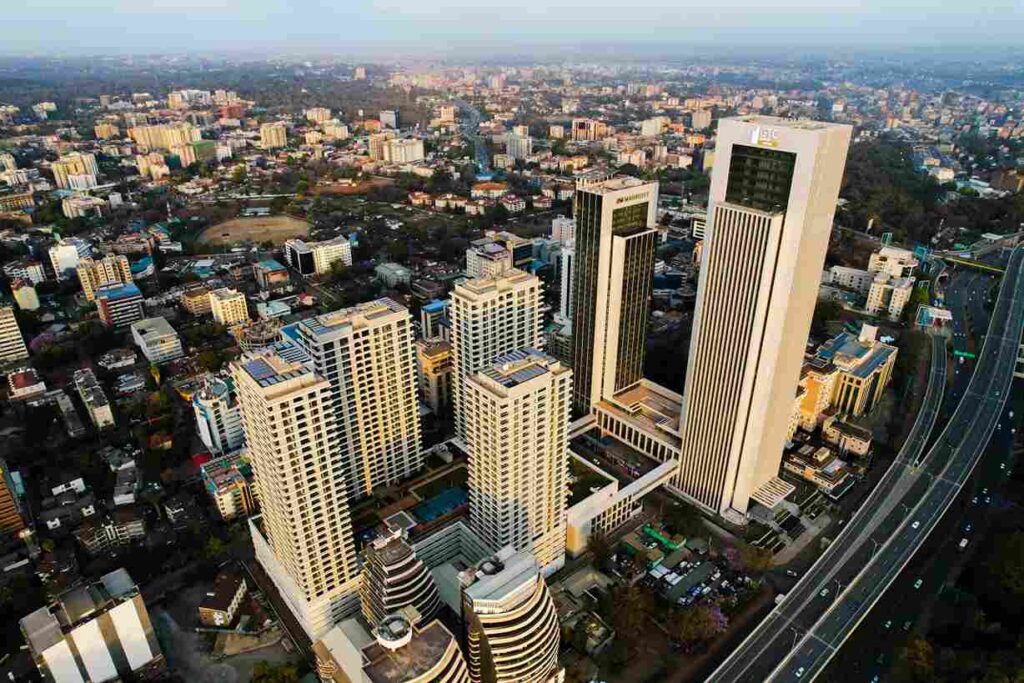The International Monetary Fund projects sub-Saharan Africa’s GDP growth to slightly decline from “4% in 2024 to 3.8% in 2025,” according to the latest World Economic Outlook.
South Africa and Nigeria have been revised downwards, with the IMF anticipating “deteriorating investor sentiment, lower crude oil prices, and an anticipated global slowdown.”
Economic growth in sub-Saharan Africa will “slow to 3.8% in 2025 from 4% last year,” with a rebound to “4.2% next year.”
Forecasts for global growth have been lowered since January due to “new US tariff rates and a highly unpredictable trading environment.”
Senegal, Ethiopia, and Côte d’Ivoire are projected to have the highest growth this year.
Africa’s oil exporters will average “2.7%,” with Nigeria at “3%.” Equatorial Guinea’s economy is expected to contract by “4.2%.”
Nigeria’s projected growth was revised down by “0.2 percentage points” due to lower oil prices from “downbeat demand projections because of the forecast slowdown.”
South Africa is predicted to grow by 1% this year.”

Kenya is projected to overtake Ethiopia
| Metric | Kenya (2025) | Ethiopia (2025) |
| GDP (USD billions) | 132 | 117 |
| GDP per capita (USD) | 2,467 | 1,066 |
| Currency performance | +21% (2024) | -33% (since July 2024) |
| IMF/World Bank Support | $1.5B bond | $3.4B IMF loan, $16.6B World Bank support |
Kenya is projected to surpass Ethiopia as East Africa’s largest economy in 2025 due to Ethiopia’s currency devaluation (“more than a third since July 2024”) for an IMF loan (“$3.4 billion”) and World Bank support, reducing its nominal GDP to “$117 billion” in 2025.
Kenya’s economy benefited from a strengthening shilling (“appreciated by about 21% in 2024”), and its GDP is forecast to reach “$132 billion” in 2025. Kenya’s GDP per capita is also higher at “$2,467” compared to Ethiopia’s “$1,066.”
Ethiopia’s economy faces strain from “conflict, climate-related challenges, and high inflation.”
The IMF expects both countries to face global headwinds but not a global recession in 2025.
“Political unrest and conflict remain a ‘pronounced’ risk,” and “rising food and energy prices have had a severe impact on vulnerable nations with limited fiscal space.”
Global growth forecast down 0.5 per cent
The IMF has lowered its global growth forecast for 2025 to “2.8 per cent,” down “0.5 percentage points” from January, citing “rising trade barriers and mounting policy uncertainty” as major threats.
IMF Chief Economist Pierre-Olivier Gourinchas warned that recent tariffs represent a “major negative shock” and the “unpredictability” of trade measures is clouding the outlook.
“The global economic system under which most countries have operated for the last 80 years is being reset,” Gourinchas said.
“Existing rules are being challenged, while new ones have yet to emerge.” Global growth is projected at “3.0 per cent for 2026,” below the historical average.
US growth is expected to slow to “1.8 per cent in 2025,” and advanced economies to “1.4 per cent.”
Emerging markets are forecast to grow at “3.7 per cent.” Gourinchas emphasised the priority to “restore trade policy stability and forge mutually beneficial arrangements” for a “clear and predictable trading system.”



